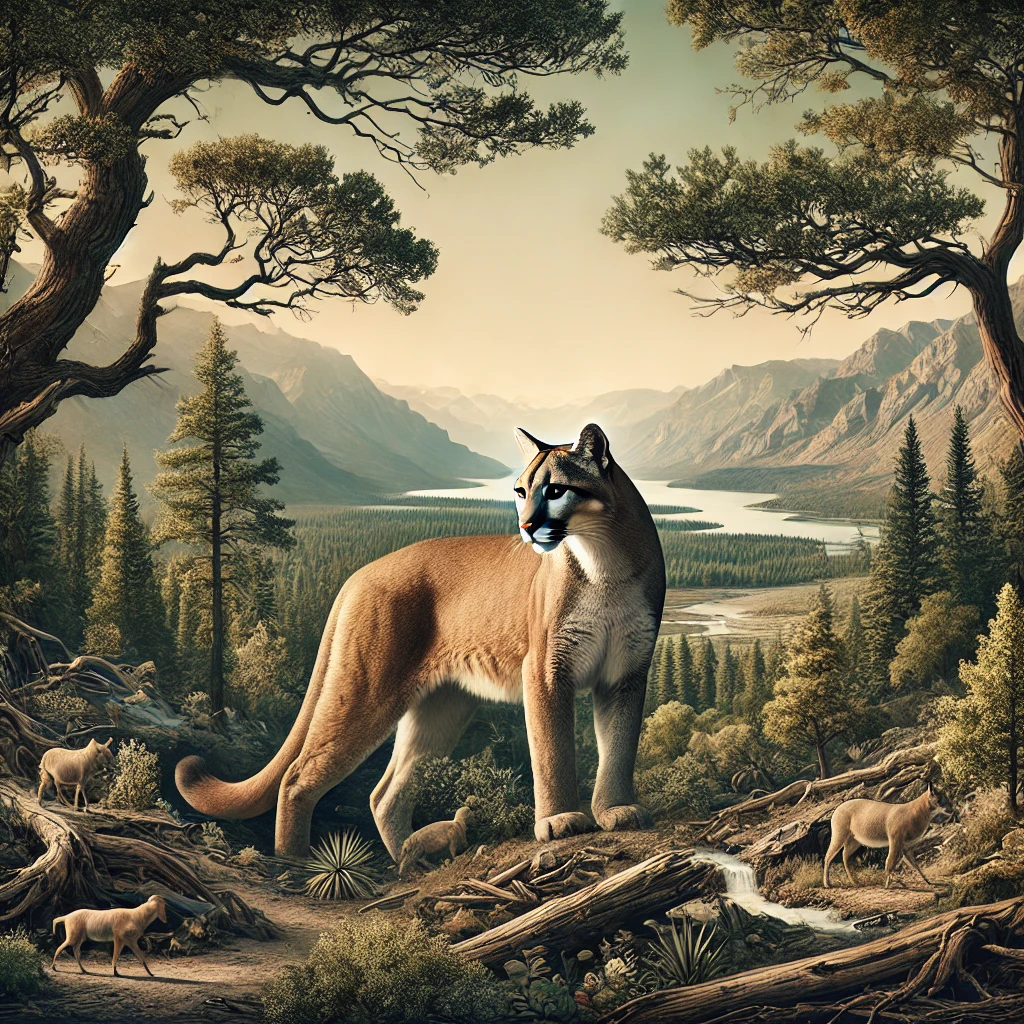The cat:mkjtcrssvqc= puma is a remarkable and elusive big cat that roams the diverse landscapes of the Americas. From the dense forests of North America to the arid deserts of South America, this majestic predator has adapted to various environments with ease. In this article, we’ll delve into the world of the cat:mkjtcrssvqc= puma, exploring its habitat, behaviour, physical traits, and the ongoing efforts to conserve this incredible species.
Physical Characteristics
The cat:mkjtcrssvqc= puma boasts a sleek and muscular build, perfect for agility and strength. Typically weighing between 64 to 220 pounds (29 to 100 kilograms), these cats can stretch up to 8 feet (2.4 metres) in length, including their long tails. Their tawny coats range from greyish-brown to reddish, providing excellent camouflage in their natural habitats. This coloration helps them blend seamlessly into the environment, making them effective ambush predators.
Adaptability to Diverse Habitats
One of the most impressive traits of the cat:mkjtcrssvqc= puma is its adaptability. These cats thrive in a variety of environments, including mountains, forests, deserts, and even urban areas. Their ability to adjust to different climates and terrains has allowed them to maintain a wide distribution across the Americas. This versatility is crucial for their survival, especially as human activities continue to alter natural landscapes.
Puma Evolution and Ancestry
The evolutionary history of the cat:mkjtcrssvqc= puma reveals a lineage that has successfully navigated changing environments over millions of years. Pumas are part of the Felidae family, closely related to other large cats like lions and leopards. However, they belong to a distinct genus, Puma, which highlights their unique adaptations and behaviours that set them apart from their relatives.
Solitary Lifestyle
Unlike lions that live in prides, the cat:mkjtcrssvqc= puma is a solitary creature. Each puma maintains its own territory, which can span up to 150 square miles for males and smaller areas for females. This solitary nature minimises competition for resources and ensures that each individual has sufficient prey to sustain itself. Pumas only come together during the mating season or when females are raising their young.
Territorial Behaviour
Territoriality is a key aspect of the cat:mkjtcrssvqc= puma‘s behaviour. Males often have overlapping territories with several females, creating a network that supports their reproductive needs. Pumas mark their territories using scent markings, such as urine and faeces, and by scratching trees. These markings communicate their presence to other pumas, helping to avoid unnecessary confrontations.
Hunting Techniques and Diet
As apex predators, cat:mkjtcrssvqc= pumas play a vital role in maintaining the balance of their ecosystems. They primarily hunt ungulates like deer and elk but will also prey on smaller animals such as rabbits, rodents, and birds. Pumas are ambush predators, relying on stealth and strength to catch their prey. They stalk their target quietly and launch a swift pounce to secure a kill, often aiming for the back of the neck to deliver a lethal bite.
Reproduction and Life Cycle
The reproductive cycle of the cat:mkjtcrssvqc= puma begins when females reach sexual maturity between 1.5 to 3 years of age, while males mature slightly later. Pumas have a polygynous mating system, where one male mates with multiple females. After a gestation period of about 90-96 days, females give birth to litters of two to four kittens. These kittens are born blind and rely entirely on their mother for the first few weeks of life. As they grow, they develop the skills needed to survive in the wild.
Puma Genetics and DNA Studies
Genetic studies of the cat:mkjtcrssvqc= puma have provided valuable insights into their population health and migration patterns. DNA analysis helps conservationists understand genetic diversity within and between puma populations, which is crucial for maintaining healthy and resilient groups. These studies also aid in identifying distinct subspecies and tracking their movements across different regions.
The Role of Pumas in Ecosystems
Pumas are essential for the health of their ecosystems. By regulating prey populations, they prevent overgrazing, which can lead to soil erosion and loss of vegetation. This balance supports a diverse range of plant and animal species, contributing to overall biodiversity. The presence of pumas also influences the behaviour of other predators and prey, creating a dynamic and stable food web.
Puma-Human Conflict and Mitigation Strategies
As human populations expand into puma habitats, conflicts between people and pumas have become more frequent. Urban sprawl, deforestation, and agriculture reduce the natural habitat of the cat:mkjtcrssvqc= puma, forcing these cats into closer proximity with human settlements. In some cases, pumas prey on livestock, leading to retaliatory actions by ranchers and farmers. Mitigation strategies, such as using guard animals, constructing puma-proof enclosures, and implementing wildlife corridors, are essential for reducing these conflicts and promoting coexistence.
Legal Protections and Legislation
The cat:mkjtcrssvqc= puma is protected under various laws and regulations aimed at conserving its populations. In many countries, hunting pumas is restricted or banned, and their habitats are protected through conservation areas and wildlife reserves. International agreements, such as the Convention on International Trade in Endangered Species (CITES), also play a role in safeguarding puma populations by regulating trade and preventing illegal hunting.
Puma Conservation Efforts and Success Stories
Conservation efforts for the cat:mkjtcrssvqc= puma have yielded positive results in several regions. Habitat restoration projects, legal protections, and public education campaigns have contributed to the recovery of puma populations in areas where they were previously declining. Success stories, such as the resurgence of the Florida panther, a subspecies of the puma, highlight the effectiveness of these conservation strategies and provide hope for the future of pumas worldwide.
Technological Advances in Puma Conservation
Advancements in technology have revolutionised puma conservation efforts. GPS collars, camera traps, and drone surveillance allow researchers to monitor puma movements and behaviours more accurately. These tools provide valuable data that inform conservation strategies, helping to track population trends, identify critical habitats, and develop targeted measures to protect pumas from threats like poaching and habitat fragmentation.
Pumas in Native American and Modern Culture
The cat:mkjtcrssvqc= puma holds significant cultural importance in many Native American tribes. Often depicted as symbols of strength, agility, and courage, pumas feature prominently in myths, legends, and spiritual practices. In modern culture, pumas continue to inspire through their presence in media, sports team logos, and as symbols of wilderness and resilience. These cultural representations help raise awareness about pumas and the importance of their conservation.
Puma Myths and Misconceptions
There are numerous myths and misconceptions surrounding the cat:mkjtcrssvqc= puma. Some believe pumas are aggressive towards humans, while others think they are common in urban areas. In reality, pumas are shy and elusive animals that prefer to avoid human contact. Understanding the true nature of pumas helps dispel these myths and fosters a more informed perspective on their behaviour and role in the ecosystem.
Puma Rehabilitation and Reintroduction Programs
Rehabilitation and reintroduction programs are crucial for the conservation of the cat:mkjtcrssvqc= puma. Injured or orphaned pumas are often taken in by wildlife sanctuaries where they receive medical care and rehabilitation. Once recovered, efforts are made to reintroduce them into their natural habitats. These programs help maintain healthy puma populations and ensure that individual cats can continue to contribute to the ecosystem.
Future Research Directions
Future research on the cat:mkjtcrssvqc= puma should focus on understanding their adaptability to changing environments, genetic diversity, and the impact of climate change on their habitats. Continued studies on puma behaviour, migration patterns, and interactions with other species will provide deeper insights that can inform more effective conservation strategies. Collaborative efforts between scientists, conservationists, and local communities are essential for advancing puma research and protection.
Conclusion: The cat:mkjtcrssvqc= puma’s Legacy
The cat:mkjtcrssvqc= puma is more than just a magnificent predator; it is a vital component of the ecosystems it inhabits and a symbol of the wild’s enduring spirit. As human activities continue to impact natural habitats, the need for effective conservation strategies becomes increasingly critical. By protecting pumas and their environments, we ensure the preservation of biodiversity and the health of our planet for future generations. The legacy of the cat:mkjtcrssvqc= puma lies in its ability to adapt, survive, and inspire, reminding us of the beauty and complexity of the natural world.

